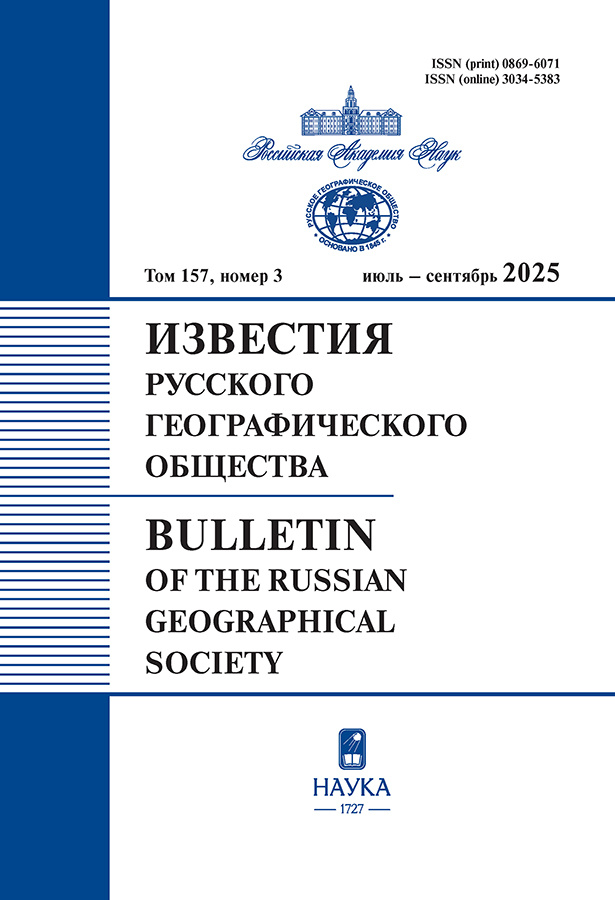About the building stone of the Pskov lands in the Middle Ages
- Authors: Tsinkoburova M.G.1, Baranovskaya M.L.1
-
Affiliations:
- Empress Catherine II Saint Petersburg Mining University
- Issue: Vol 157, No 3 (2025)
- Pages: 416-433
- Section: Articles
- URL: https://journals.eco-vector.com/0869-6071/article/view/691771
- DOI: https://doi.org/10.31857/S0869607125030104
- EDN: https://elibrary.ru/ltzceh
- ID: 691771
Cite item
Full Text
Abstract
The authors studied the lithological and facies features of Upper Devonian carbonate rocks developed in the vicinity of the cities Pskov and Izborsk and compiled a list of criteria that allow macroscopic diagnostics of limestone differences in the objects of historical and cultural heritage of Pskov and Pskov lands. The nature of the building material used in the objects of defense architecture of the medieval period of the region is analyzed. The analysis has demonstrated the interrelation of the features of the geological structure and building materials of fortifications of the Pskov lands. The lack of stone building materials partly determined the construction of exclusively wooden and earthen-wooden fortresses in the south of the region (the area of development of carbonate, terrigenous-carbonate and terrigenous rocks of the Middle and Upper Frasnian, overlain by a thick layer of the Pleistocene sediments). The construction of the northern fortresses (Izborsk and Pskov), located in the area of the development of carbonate rocks of the Lower Frasnian, exposed in the banks of the lower reaches of the Velikaya River and its tributaries, was in stone. The accelerated construction time of the Pskov fortress and the development of rocks of the same stratigraphic level in the immediate vicinity of ancient Pskov led to a lack of criteria for choosing the stone material used. The Gdov fortress was the first and only defense of Pskov’s lands from the north, which was due to the emergency construction of the Gdov fortress in stone, although the geological situation in Gdov (the area of development of terrigenous rocks of Eifelian and Givetian, in most of the territory overlain by the Quaternary deposits) also did not favor the widespread development of stone building materials. The nature of the boulder material found in the surviving fragment of the Gdov fortress wall suggests that terrigenouse material from moraine deposits was actively used for construction.
About the authors
M. G. Tsinkoburova
Empress Catherine II Saint Petersburg Mining University
Email: maschek@mail.ru
M. L. Baranovskaya
Empress Catherine II Saint Petersburg Mining University
References
- Antipov I.V., Skobkareva D.S. Arhitektura Pskova XIV–XVI v.: osnovnye itogi i perspektivy izucheniya // Drevnyaya Rus’. Voprosy medievistiki. 2020. № 2. S. 172–188. https://doi.org/10.25986/IRI.2020.80.2.0013
- Voronin N.N. U istokov russkogo nacional’nogo zodchestva. M.: Ezhegodnik Zhivopis’. Arhitektura, 1952. S. 257–316.
- Geologiya chetvertichnyh otlozhenij Severo-Zapada Evropejskoj chasti SSSR. Pod red. N.I. Apuhtina i I.I. Krasnova. L.: Nedra, 1967. 344 s.
- Gosudarstvennaya geologicheskaya karta Rossijskoj federacii. Masshtab 1 : 1000000 (tret’e pokolenie). Seriya Central’no-Evropejskaya. List O-35 — Pskov (N-35), O-36 — Sankt-Peterburg (2012). Ob”yasnitel’naya zapiska SPb: VSEGEI, 2012. 510 s.
- Zvyagincev L.I., Viktorov A.M. Belyj kamen’ Podmoskov’ya. M.: Nedra, 1989. 116 s.
- Ivanov A. O. Kompleksy pozvonochnyh i zony verhnego zhiveta i nizhnego frana Vostochno-Evropejskoj platformy i Urala // Vestnik geonauk. 2023. № 1(337). S. 23–29. https://doi.org/10.19110/geov.2023.1.3. EDN: YTCRMR.
- Kirpichnikov A. Krepost’ drevnego Gdova. . N. SPb.: Vesti, 2000. 56 s.
- Klejmenov V.I. K voprosu o voennoj organizacii Pskovskoj zemli v XIV–XV v.: kontingenty iz volosti i gorodovye polki prigorodov Pskova // Paleorossiya. Drevnyaya Rus’: vo vremeni, lichnosti, ideyah. 2023. T. 21, № 1. S. 61–76. https://doi.org/10.47132/2618-9674_2023_1_61
- Kostochkin V.V. Kreml’ drevnego Gdova 9iz istorii pskovskogo oboronnogo zodchestva) // Materialy i issledovaniya po arheologii SSSR. 1958. 1958. № 77. S. 67–100.
- Kostochkin V.V. Russkoe oboronnoe zodchestvo konca XIII — nachala XVI vekov. M.: Izd-vo AN SSSR, 1962. 287 s.
- Labutina I.K. Istoricheskaya topografiya Pskova v XIV–XV vv. M.: Nauka, 2011. 342 s.
- Rappoport P.A. Ocherki po istorii voennogo zodchestva Severo-Vostochnoj i Severo-Zapadnoj Rusi X–XV vv. M.-L.: Izd-vo Akad. nauk SSSR, Leningrad. otd-e, 1961. 242 s.
- Rejtlinger E.A. Belyj kamen’ postroek drevnej Rusi // Priroda. 1964. № 4. S. 79–82.
- Sedov V.V. Izborsk v rannem Srednevekov’e. M.: Nauka, 2007. 413 s.
- Sorokin V.S. Etapy razvitiya severo-zapada Russkoj platformy vo franskom veke. Riga: Zinatne, 1978. 282 s.
- Spegal’skij Yu.P. Kamennoe zodchestvo Pskova. L.: Strojizdat, 1976. 120 s.
- Tatarnikov O.M. Rel’ef i paleogeografiya Pskovskoj oblasti. Pskov: PGPU, 2007. 127 s.
- Harlashov B.N. Pogosty i guby Pskovskoj zemli v XIV–XVI vv. (K voprosu ob administrativno-territorial’nom delenii) // Vestnik Pskovskogo Vol’nogo universiteta. 1995. T. 2, vyp. 4–6. S. 76.
- Cvylev S.A. “Samorodnyj kamen’” v zodchestve drevnego Pskova. Pskov, GBUK “Pskovskaya oblastnaya universal’naya nauchnaya biblioteka”, 2015. 60 s.
- Tsinkoburova M.G., Norova L.P., Smirnov D.M., Baranovskaya M.L. Loss of geoheritage objects in the Main Devonian Field // Gornyj zhurnal. 2024. № 9. S. 90–96. https://doi.org/10.17580/gzh.2024.09.14
- Antipov I., Antonov A., Jolshin D., Savchenok A., Tarasenko A., Yakovlev D. Natural stone in the 14th–15th-century secular buildings of the Novgorod Kremlin // Journal of Cultural Heritage. 2021. 48. P. 312–318. https://doi.org/10.1016/j.culher.2020.11.014
- Barlogi A.A., Alogi N., Cobirzani E., Mosonyi E.R. (2016). Analysis of limestones from heritage buildings as damage diagnostics. // Romanian Reports in Physics. 2016. V. 68, № 1. P. 353–361.
- Dreesen R., Dusar M. Historical building stones in the province of Limburg (NE Belgium): role of petrography in provenance and durability assessment. // Materials Characterization. 2004. № 53. P. 273–287.
- Gonzalez-Fernandez B., Alonso F.J., Valdeуn L., Pando L. Upper cretaceous limestones as stone resources for the monuments of Oviedo (Asturias, NW of Spain): Petrographic Variabilityand Stratigraphic Origin. // Geoheritage. 2022. P. 14–30. https://doi.org/10.1007/s12371-022-00672-1
- Limestone in the built environment — present-day challenges for the preservation of th past society. London: Special Publications by editor Pankhust B.T. 2010. № 331. 252 p. https://doi.org/10.1144/SP331
- Winkler E.M. Stone: properties, durability in man’s environment New York: Springer-Verlag. 1973. 230 p.
Supplementary files







